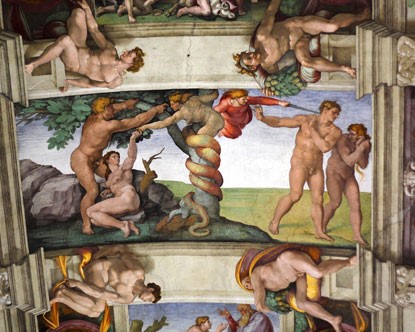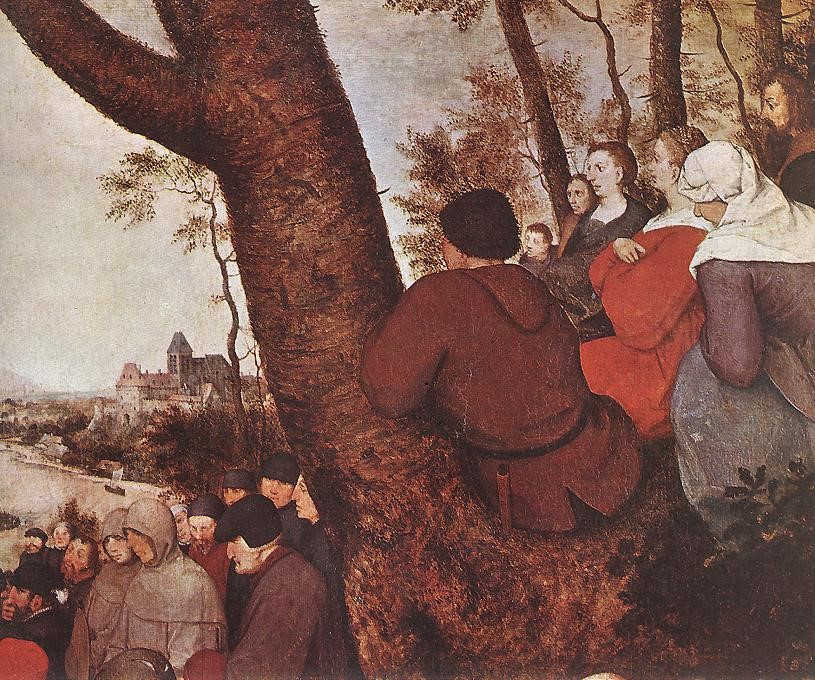 All papers examples
All papers examples
Disciplines

- MLA
- APA
- Master's
- Undergraduate
- High School
- PhD
- Harvard
- Biology
- Art
- Drama
- Movies
- Theatre
- Painting
- Music
- Architecture
- Dance
- Design
- History
- American History
- Asian History
- Literature
- Antique Literature
- American Literature
- Asian Literature
- Classic English Literature
- World Literature
- Creative Writing
- English
- Linguistics
- Law
- Criminal Justice
- Legal Issues
- Ethics
- Philosophy
- Religion
- Theology
- Anthropology
- Archaeology
- Economics
- Tourism
- Political Science
- World Affairs
- Psychology
- Sociology
- African-American Studies
- East European Studies
- Latin-American Studies
- Native-American Studies
- West European Studies
- Family and Consumer Science
- Social Issues
- Women and Gender Studies
- Social Work
- Natural Sciences
- Anatomy
- Zoology
- Ecology
- Chemistry
- Pharmacology
- Earth science
- Geography
- Geology
- Astronomy
- Physics
- Agriculture
- Agricultural Studies
- Computer Science
- Internet
- IT Management
- Web Design
- Mathematics
- Business
- Accounting
- Finance
- Investments
- Logistics
- Trade
- Management
- Marketing
- Engineering and Technology
- Engineering
- Technology
- Aeronautics
- Aviation
- Medicine and Health
- Alternative Medicine
- Healthcare
- Nursing
- Nutrition
- Communications and Media
- Advertising
- Communication Strategies
- Journalism
- Public Relations
- Education
- Educational Theories
- Pedagogy
- Teacher's Career
- Statistics
- Chicago/Turabian
- Nature
- Company Analysis
- Sport
- Paintings
- E-commerce
- Holocaust
- Education Theories
- Fashion
- Shakespeare
- Canadian Studies
- Science
- Food Safety
- Relation of Global Warming and Extreme Weather Condition
Paper Types

- Movie Review
- Essay
- Admission Essay
- Annotated Bibliography
- Application Essay
- Article Critique
- Article Review
- Article Writing
- Assessment
- Book Review
- Business Plan
- Business Proposal
- Capstone Project
- Case Study
- Coursework
- Cover Letter
- Creative Essay
- Dissertation
- Dissertation - Abstract
- Dissertation - Conclusion
- Dissertation - Discussion
- Dissertation - Hypothesis
- Dissertation - Introduction
- Dissertation - Literature
- Dissertation - Methodology
- Dissertation - Results
- GCSE Coursework
- Grant Proposal
- Admission Essay
- Annotated Bibliography
- Application Essay
- Article
- Article Critique
- Article Review
- Article Writing
- Assessment
- Book Review
- Business Plan
- Business Proposal
- Capstone Project
- Case Study
- Coursework
- Cover Letter
- Creative Essay
- Dissertation
- Dissertation - Abstract
- Dissertation - Conclusion
- Dissertation - Discussion
- Dissertation - Hypothesis
- Dissertation - Introduction
- Dissertation - Literature
- Dissertation - Methodology
- Dissertation - Results
- Essay
- GCSE Coursework
- Grant Proposal
- Interview
- Lab Report
- Literature Review
- Marketing Plan
- Math Problem
- Movie Analysis
- Movie Review
- Multiple Choice Quiz
- Online Quiz
- Outline
- Personal Statement
- Poem
- Power Point Presentation
- Power Point Presentation With Speaker Notes
- Questionnaire
- Quiz
- Reaction Paper
- Research Paper
- Research Proposal
- Resume
- Speech
- Statistics problem
- SWOT analysis
- Term Paper
- Thesis Paper
- Accounting
- Advertising
- Aeronautics
- African-American Studies
- Agricultural Studies
- Agriculture
- Alternative Medicine
- American History
- American Literature
- Anatomy
- Anthropology
- Antique Literature
- APA
- Archaeology
- Architecture
- Art
- Asian History
- Asian Literature
- Astronomy
- Aviation
- Biology
- Business
- Canadian Studies
- Chemistry
- Chicago/Turabian
- Classic English Literature
- Communication Strategies
- Communications and Media
- Company Analysis
- Computer Science
- Creative Writing
- Criminal Justice
- Dance
- Design
- Drama
- E-commerce
- Earth science
- East European Studies
- Ecology
- Economics
- Education
- Education Theories
- Educational Theories
- Engineering
- Engineering and Technology
- English
- Ethics
- Family and Consumer Science
- Fashion
- Finance
- Food Safety
- Geography
- Geology
- Harvard
- Healthcare
- High School
- History
- Holocaust
- Internet
- Investments
- IT Management
- Journalism
- Latin-American Studies
- Law
- Legal Issues
- Linguistics
- Literature
- Logistics
- Management
- Marketing
- Master's
- Mathematics
- Medicine and Health
- MLA
- Movies
- Music
- Native-American Studies
- Natural Sciences
- Nature
- Nursing
- Nutrition
- Painting
- Paintings
- Pedagogy
- Pharmacology
- PhD
- Philosophy
- Physics
- Political Science
- Psychology
- Public Relations
- Relation of Global Warming and Extreme Weather Condition
- Religion
- Science
- Shakespeare
- Social Issues
- Social Work
- Sociology
- Sport
- Statistics
- Teacher's Career
- Technology
- Theatre
- Theology
- Tourism
- Trade
- Undergraduate
- Web Design
- West European Studies
- Women and Gender Studies
- World Affairs
- World Literature
- Zoology
Hieronymus Bosch’s Paintings, Coursework Example
Hire a Writer for Custom Coursework
Use 10% Off Discount: "custom10" in 1 Click 👇
You are free to use it as an inspiration or a source for your own work.

The Afterlife in Western Art
The relationship between Christianity and art in Europe is extensive, highly complex, and reflects just how fundamental faith was in European society. It is natural for a modern mind to distinguish between church and state, and even church and society; for long centuries in Europe, however, there were no dichotomies, and the power of the church was inestimable. Put another way, in understanding the representation of the afterlife as reflecting Catholic ideas, it must be understood that there was an immense political component to the process. This is reinforced, in fact, by the Great Schism of 1378 through 1417, when several popes vied for the right to claim the office. The church itself was a commercial and military enterprise, and more than one pope led armies (metmuseum.org). Consequently, Catholic faith was a significant factor in all life, and this then emphasized all the more its assertions on the nature of the afterlife. It also seems logical that the sweep of the Bubonic Plague in the 14th century enhanced the power of the Catholic Church as the Middle Ages gave way to the Renaissance, simply by virtue of its being so “apocalyptic” an event. As philosophers like Brant would emphasize, there was a sense in the common mind that death and devastation on this order must be a divine retribution for man’s sins (online lecture).
In terms of art, this translated to interesting, and evolving, modes of expression. As the church insisted on exalting its own power, commissioned artists created landscapes of stunning beauty, romanticizing Catholic concepts of the creation and the afterlife. The timing of this is particularly compelling, in that shifts of expression were nearly contemporary. For example, much of Michelangelo’s work may be viewed as classically Renaissance, in that it conveys the idealized view of divinity essential to the agenda of the church. With Michelangelo, there is no question that man is glorified only through his relationship to God as prescribed by the church. There is great beauty in his depictions of humanity, but there is also a reinforcement of divine majesty as surmounting this, and as being a greatness “belonging” to the church. In the Sistine Chapel detail of the expulsion from Eden, for example, the guiding angel actually seems to represent the authority of God as established by the church.

Michelangelo. Detail: Ceiling of the Sistine Chapel
1508-1512. Sistine Chapel Apostolic Palace, Vatican City, Italy
Shortly thereafter, however, Hieronymus Bosch would change this mode of divine representation. While Bosch is considered a Renaissance artist, his work clearly reflects attitudes and beliefs of the late Middle Ages (online lecture). Moreover, there are aspects to it strikingly going to Protestant concerns, even as his imagery is powerfully Gothic and extreme. The essential nature of Protestantism was reactive; this was a revolt, or “protest,” against the established order of the Catholic Church. Protestants particularly rebelled against the immense structure of Catholic ritual and representation, which they believed stood in the way of the individual’s access to God and divine will. Not unexpectedly, then, this would translate into a demystifying of the elaborate conceptions of heaven and hell (online lecture). While Bosch certainly held to mysticism, the sheer graphic quality of his work removes it from any idealized conceptions. His influence may be viewed as post-Michelangelo, similar time periods notwithstanding, due to his work being Dutch and consequently removed from the sphere of Italian art and the Roman church.

Hieronymus Bosch, Hell
1490. Palazzo Ducal, Venice, Italy
As is evident in the above, Bosch completely dispensed with beauty. Michelangelo’s serpent is fearsome, but it is still beautiful; for Bosch, hell is marked by ugliness, and an ugliness seeming to be the just reward for man’s sin. There can be no underestimating of the importance of the timing, again, in regard to these changing views. As the Middle Ages gave way to the Renaissance, so too was the Catholic Church responding to the threat Protestantism. What Bosch’s work represents is not a radically different interpretation of hell in the afterlife, but one distanced from the grandeur of the Catholic powers. When the paintings of Bosch are compared to those of other, Italian Renaissance artists, there is a gritty realism to the afterlife combined with a sense of the fantastic that in no way resembles any mystical realm. The pain of hell in Bosch is virtually tangible. His damned are not in the grip of powerful remorse or despair; they express physical suffering, which emphasizes the innate mortality of them. They do not evince sorrow; they exhibit agony, just as living men and women feel pain. His landscapes, also, while bizarre, remain on an earthly dimension. The hell of Bosch’s afterlife gives an impression of a strangely organic city, filled with clumsy, man-made structures and perversions of the same. What occurs after life, Bosch represents, is only an extension of what mankind may experience on earth. This is an afterlife that is, in a word, more down to earth, just as Protestantism sought to link man’s relationship with God with no “third party.” This influence would take more gentle expression as well in the 16th century, as evidenced in the later work of Brugel.

Pieter Brugel the Elder. Detail: Sermon of St. John the Baptist
Musee des Beaux-Arts, Lille, France
Brugel’s work, coming so soon after Bosch and Michelangelo, reveals a new and stunning dimension inspired by Bosch: ordinariness. The people watching John the Baptist are common peasants, clearly in a modern setting of the time. There is the sense that they are pausing in their daily activities to take in the sermon, and this is the absolute spirit of Protestantism, wherein the divine is as one with mortal life. In a remarkably short time, then, it seems that the drastic changes occurring in European faith would move art from the grandeur of Michelangelo to the grittier and more frightening visions of Bosch, and finally to a leveling of heaven and the word of God down to a very mortal plane.
Works Cited
ArtBible.info. Art and the Bible: Hieronymus Bosch, The Last Judgment. 2012. Web. Retrieved from http://www.artbible.info/art/large/165.html
Hieronymus-Bosch.org. Hieronymus Bosch: The Complete Works. 2012. Web. Retrieved from http://www.hieronymus-bosch.org/Hell-(detail).html
Metmuseum.org. The Papacy During the Renaissance. 2012. Web. Retrieved from http://www.metmuseum.org/toah/hd/pape/hd_pape.htm
Smithsonian.com. The Measure of Genius: Michelangelo’s Sistine Chapel at 500. 2009. Web. Retrieved from http://www.smithsonianmag.com/arts-culture/The-Measure-of-Genius-Michelangelos-Sistine-Chapel-at-500.html
Web Gallery of Art (WGA). The Sermon of St. John the Baptist. N/d. Web. Retrieved from http://www.wga.hu/frames-e.html?/html/b/bruegel/pieter_e/09/index.html

Stuck with your Coursework?
Get in touch with one of our experts for instant help!
Tags:

Time is precious
don’t waste it!
writing help!


Plagiarism-free
guarantee

Privacy
guarantee

Secure
checkout

Money back
guarantee

